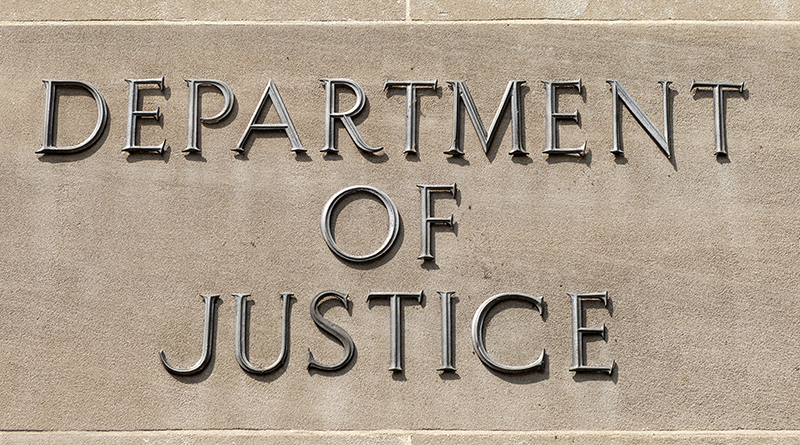
In a December 4 post, I reported that the Court of Appeals for the Fifth Circuit had agreed to rehear the Biden administration’s appeal of an August 19 order in Texas v. U.S., enjoining restrictions on ICE officers in their enforcement of the immigration laws against criminal aliens, en banc (with all 17 judges deciding the case). On December 6, DOJ filed a Consent Motion to Voluntarily Dismiss its appeal, with the agreement of the plaintiff states of Texas and Louisiana, although it is not clear what the effect will be.
That earlier post provided an in-depth analysis of the case, but briefly, Texas was brought by the states of Texas and Louisiana against DHS to block restrictions it had placed on ICE enforcement of the immigration laws in the interior of the United States. That case was initially considered by Judge Drew Tipton of the U.S. District Court for the Southern District of Texas.
Those restrictions were contained in two memos, one from then-Acting DHS Secretary David Pekoske on January 20, captioned "Review of and Interim Revision to Civil Immigration Enforcement and Removal Policies and Priorities”, and the other a February 18 memo from Acting ICE Director Tae Johnson, captioned “Interim Guidance: Civil Immigration Enforcement and Removal Priorities”.
Overly simplistically, the memos significantly limited the class of removable aliens that ICE officers and agents would be able to question, let alone detain, prosecute, and remove, to three specific groups: terrorists and spies; aliens who entered illegally after October 31, 2020; and certain criminal aliens.
Judge Tipton enjoined those directives to the degree that they contradicted provisions in the Immigration and Nationality Act (INA) in which Congress directed that aliens removable on certain criminal grounds be taken into custody and detained pending removal proceedings, and that specified criminal aliens be detained after have been ordered removed pending removal.
A three-judge panel of the Fifth Circuit on September 15 issued a decision limiting the scope of that injunction, to cover only criminal aliens in removal proceedings for whom ICE had filed a detainer, and those aliens removable on the specified criminal grounds awaiting removal.
In its November 30 order agreeing to hear the case en banc, the Fifth Circuit vacated the order of the three-judge circuit panel pending its review, in essence leaving Judge Tipton’s injunction in effect.
Complicating matters is the fact that on September 30 (15 days after the panel’s decision), DHS Secretary Alejandro Mayorkas issued his own directive limiting ICE enforcement, “Guidelines for the Enforcement of Civil Immigration Law”. It was to take effect on November 29 and rescinded the Pekoske and Tae Johnson memos.
Mayorkas’s memo was slightly less restrictive on ICE officers when it came to immigration enforcement against removable aliens, but it also imposed burdensome and unnecessary requirements on ICE officers they are required to comply with before taking enforcement action.
By the time that this case made it to the en banc court, there were a lot of competing restrictions on ICE enforcement, as the above demonstrates. The last one — the Mayorkas memo — had not been considered by Judge Tipton or the three-judge circuit panel.
Given this, it would make sense for DOJ to dismiss its appeal. Judge Tipton’s order was based on the then-existing “guidance” and his injunction was tailored to that guidance. Once the Pekoske and Tae Johnson memos were rescinded, Judge Tipton’s injunction no longer has any practical effect.
That said, his order also contained reporting requirements directing the federal government to report back monthly on the number of aliens who were removable on criminal grounds for whom detention is mandated by the INA, the number who were detained, and the number who were released.
That order also required the federal government to tell Judge Tipton monthly how many aliens under orders of removal were removable on the specified criminal grounds of removal in the INA and how many were not detained.
For both categories of aliens, the government was required to explain why they were not detained, and to identify the person or persons making that decision. Those orders are not tied to the Pekoske and Tae Johnson memos, and thus should still be in effect.
That said, I am not even sure about that latter point, because this is a very unusual case. The plaintiff states will amend their complaint to address the Mayorkas memo and explain why it fails to comply with the INA, too — although they have not commented on their plans.
One way or the other, following the Fifth Circuit’s inevitable dismissal of DOJ’s appeal, the process will begin new — until the Biden administration starts following Congress’s mandates and actually enforces the law.
